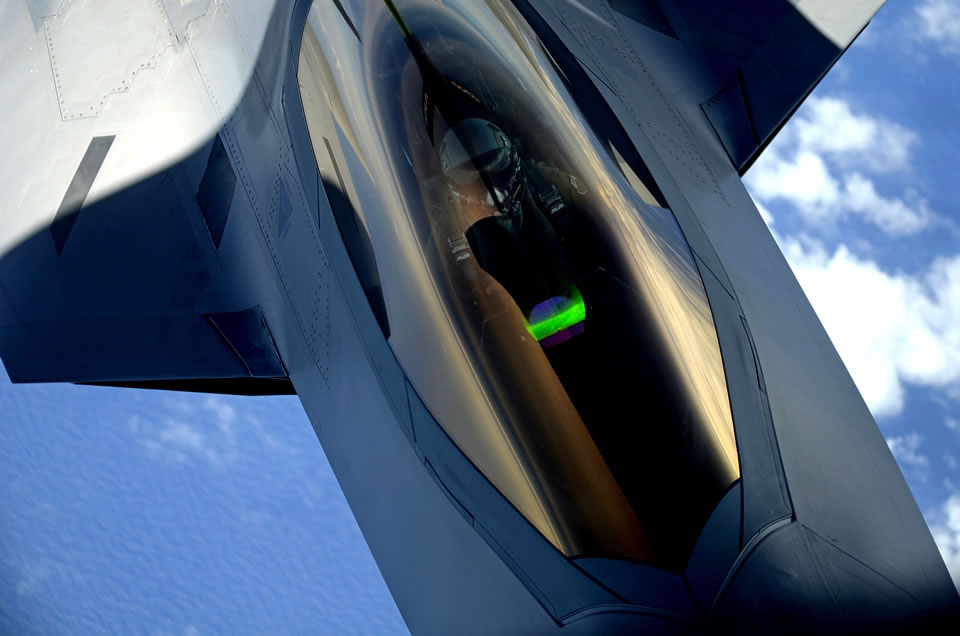

Following a lengthy investigation into the cause of numerous incidents causing F-22 Raptor pilots to suffer from hypoxia-like symptoms, the U.S. Air Force is upgrading the Raptor’s life support system, installing an Automatic Back-up Oxygen System (ABOS). Existing back-up oxygen systems were manually activating. The upgrade will be completed within a year. Raptors in Alaska have already begun using the system. The Air Force denied that the cause of a fatal accident in November 2010, killing Alaskan-based F-22 pilot Captain Jeff Haney was caused by Hypoxia.
“ABOS is automatically activated to supply the pilot 100% oxygen in the event of a rapid decompression or low primary breathing air pressure supply”
The upgrade followed the recommendation of the Air Force Scientific Advisory Board to improve the Raptor’s aircrew life support system, including the installation of an automatically-activated backup oxygen system. The Air Force awarded more than $30 million in multiple contracts to Lockheed Martin to install the systems. According to Mike Connolly, ABOS Program Manager at the F-22 Life Cycle Management Center at Wright patterson, the ABOS is a simply designed system that is integrated into the breathing regulator. It has a control panel in the cockpit within the pilot’s reach so that he or she can manually turn it on if backup oxygen is needed. Unlike the current system that requires manual activation by the pilot, the ABOS is typically left in the auto position, which will automatically provide the pilot 100% oxygen in the event of a rapid decompression or low primary breathing air pressure. Automatic activation prevents the risk of oxygen cutoff when the pilot may be unconscious or blurred, as some of the pilots suffering from hypoxia reported.



















